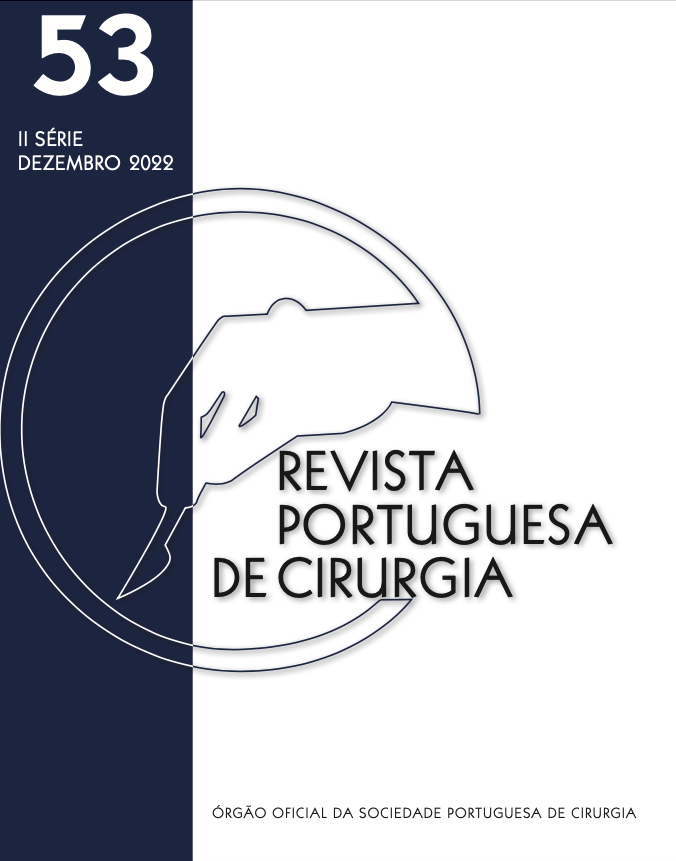POSTOPERATIVE DELIRIUM AMONG ELDERY PATIENTS
DOI:
https://doi.org/10.34635/rpc.971Keywords:
postoperative delirium, surgery, elderyAbstract
Background: Postoperative Delirium (POD) is defined as the occurrence of delirium among patients undergoing surgery, being particularly common among the elderly. This study focused on the incidence of POD among elderly patients admitted to a General Surgery ward.
Methods: This was a prospective study among elderly patients admitted to a General Surgery ward. Neurologic assessments were carried out among patients aged 65 years and above, with a minimum hospital stay of four days. Patients undergoing surgical procedures were included in the study group; patients treated medically formed the control group. We collected demographic and clinical data and a Mini-Mental State Examination (MMSE) and Confusion Assessment Method 3-Minute (3D-CAM) were performed.
Results: The incidence of delirium among elderly patients was 10%, the incidence of POD in elderly patients undergoing surgery was 14.9% versus 4.7% in patients undergoing medical treatment. Older age, higher Charlson Comorbidity Index (CCI), and a lower MMSE were significant for the development of delirium. Surgery implied an odds ratio of 3,588 showing a trend towards a greater occurrence of delirium among elderly patients undergoing surgery.
Conclusions: POD’s is an important and common complication whose etiology is multifactorial. This study seems to be in accordance with the literature regarding the impact of aging, cognitive basal state, and comorbidity burden on the vulnerability that renders patients prone to the development of an acute confusional state.
Downloads
References
2. APA. (2013). Diagnostic and Statistical Manual of Mental Disorders DSM- V-TR Fifth Edition (Text Revision). Washington, DC: American Psychiatric Association.
3. Saxena, S., and Lawley, D. (2009). Delirium in the elderly: a clinical review. Postgrad. Med. J. 85, 405–413.
4. Oh, S. T., & Park, J. Y. (2019). Postoperative delirium. Korean journal of anesthesiology, 72(1), 4–12. https://doi.org/10.4097/kja.d.18.00073.1
5. Fong, T. G., Tulebaev, S. R., & Inouye, S. K. (2009). Delirium in elderly adults: diagnosis, prevention and treatment. Nature reviews. Neurology, 5(4), 210–220. https://doi.org/10.1038/nrneurol.2009.24
6. Inouye, S. K., Westendorp, R. G., & Saczynski, J. S. (2014). Delirium in elderly people. Lancet (London, England), 383(9920), 911–922. doi:10.1016/S0140-6736(13)60688-1
7. Watt, J., Tricco, A.C., Talbot-Hamon, C. et al. Identifying Older Adults at Risk of Delirium Following Elective Surgery: A Systematic Review and Meta-Analysis. J GEN INTERN MED 33, 500–509 (2018). https://doi.org/10.1007/s11606-017-4204-x
8. Green, J.R., Smith, J., Teale, E. et al. Use of the confusion assessment method in multicentre delirium trials: training and standardisation. BMC Geriatr 19, 107 (2019). https://doi.org/10.1186/s12877-019-1129-8
9. Fabbri, Renato Moraes Alves, Moreira, Marcos Aurélio, Garrido, Regiane, & Almeida, Oswaldo Pereira. (2001). Validity and reliability of the Portuguese version of the Confusion Assessment Method (CAM) for the detection of delirium in the elderly. Arquivos de Neuro-Psiquiatria, 59(2A), 175-179. https://doi.org/10.1590/S0004-282X2001000200004
10. Marcantonio, E. R., Ngo, L. H., O’Connor, M., Jones, R. N., Crane, P. K., Metzger, E. D., & Inouye, S. K. (2014). 3D-CAM: derivation and validation of a 3-minute diagnostic interview for CAM-defined delirium: a cross-sectional diagnostic test study. Annals of internal medicine, 161(8), 554–561. https://doi.org/10.7326/M14-0865
11. Zoremba, N., & Coburn, M. (2019). Acute Confusional States in Hospital. Deutsches Arzteblatt international, 116(7), 101–106. https://doi.org/10.3238/arztebl.2019.0101
12. Lori A. Daiello, Annie M. Racine, Ray Yun Gou, Edward R. Marcantonio, Zhongcong Xie, Lisa J. Kunze, Kamen V. Vlassakov, Sharon K. Inouye, Richard N. Jones, for the SAGES Study Group; Postoperative Delirium and Postoperative Cognitive Dysfunction: Overlap and Divergence. Anesthesiology 2019;131(3):477-491.
13. Charlson ME, Pompei P, Ales KL, MacKenzie CR. A new method of classifying prognostic comorbidity in longitudinal studies: development and validation. J Chronic Dis 1987; 40:373-83.
14. Folstein MF, Folstein SE, McHugh PR. “Mini-mental state”. A practical method for grading the cognitive state of patients for the clinician. J Psychiatr Res. 1975 Nov;12(3):189-98. doi: 10.1016/0022-3956(75)90026-6. PMID: 1202204.
15. Gofton, T. E. (2011). Delirium: a review. Can. J. Neurol. Sci. 38, 673–680. Guenther, U., and Radtke, F. M. (2011)
16. Dasgupta, M., and Hillier, L. M. (2010). Factors associated with prolonged delirium: a systematic review. Int. Psychogeriatr. 22, 373–394.
17. Veiga, Dalila, Luis, Clara, Parente, Daniela, Fernandes, Vera, Botelho, Miguela, Santos, Patricia, & Abelha, Fernando. (2012). Delirium pós-operatório em pacientes críticos: fatores de risco e resultados. Revista Brasileira de Anestesiologia, 62(4), 476-483. https://doi.org/10.1590/S0034-70942012000400001
18. Iamaroon, A., Wongviriyawong, T., Sura-arunsumrit, P. et al. Incidence of and risk factors for postoperative delirium in older adult patients undergoing noncardiac surgery: a prospective study. BMC Geriatr 20, 40 (2020). https://doi.org/10.1186/s12877-020-1449-8
Downloads
Published
Issue
Section
License
Para permitir ao editor a disseminação do trabalho do(s) autor(es) na sua máxima extensão, o(s) autor(es) deverá(ão) assinar uma Declaração de Cedência dos Direitos de Propriedade (Copyright). O acordo de transferência, (Transfer Agreement), transfere a propriedade do artigo do(s) autor(es) para a Sociedade Portuguesa de Cirurgia.
Se o artigo contiver extractos (incluindo ilustrações) de, ou for baseado no todo ou em parte em outros trabalhos com copyright (incluindo, para evitar dúvidas, material de fontes online ou de intranet), o(s) autor(es) tem(êm) de obter, dos proprietários dos respectivos copyrights, autorização escrita para reprodução desses extractos do(s) artigo(s) em todos os territórios e edições e em todos os meios de expressão e línguas. Todas os formulários de autorização devem ser fornecidos aos editores quando da entrega do artigo.



